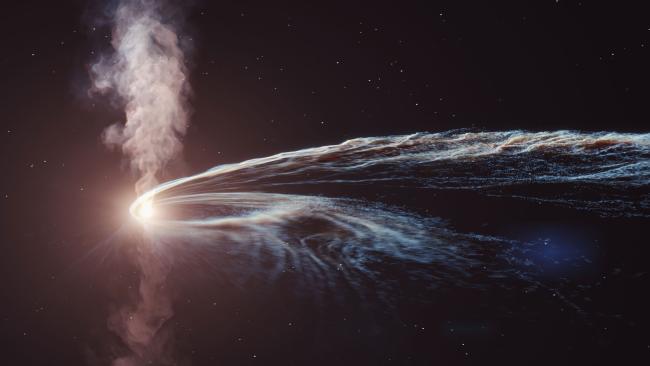Science News Roundup: Arianespace signs five satellites launches with European Commission; Distant black hole is caught in the act of annihilating a star and more
It was one of only four examples - and the first since 2011 - of a black hole observed in the act of tearing apart a passing star in what is called a tidal disruption event and then launching luminous jets of high-energy particles in opposite directions into space, researchers said.

Following is a summary of current science news briefs.
Arianespace signs five satellites launches with European Commission
Arianespace has signed a deal with the European Commission for the purchase of five launches with the Vega C launcher, the company said on Tuesday. The French group said in a statement it will launch five Sentinel satellites between 2024 and 2026 for the Copernicus programme to provide Europe with reliable access to earth observation data.
Chinese astronauts board space station in historic mission
Three Chinese astronauts arrived on Wednesday at China's space station for the first in-orbit crew rotation in Chinese space history, launching operation of the second inhabited outpost in low-Earth orbit after the NASA-led International Space Station. The spacecraft Shenzhou-15, or "Divine Vessel", and its three passengers lifted off atop a Long March-2F rocket from the Jiuquan Satellite Launch Centre at 11:08 p.m. (1508 GMT) on Tuesday in sub-freezing temperatures in the Gobi Desert in northwest China, according to state television.
Distant black hole is caught in the act of annihilating a star
Astronomers have detected an act of extreme violence more than halfway across the known universe as a black hole shreds a star that wandered too close to this celestial savage. But this was no ordinary instance of a ravenous black hole. It was one of only four examples - and the first since 2011 - of a black hole observed in the act of tearing apart a passing star in what is called a tidal disruption event and then launching luminous jets of high-energy particles in opposite directions into space, researchers said. And it was both the furthest and brightest such event on record.
(With inputs from agencies.)
ALSO READ
Tsunami warning issued after earthquake off southwestern Japan - NHK
A strong earthquake hits off a southern Japanese island near Taiwan and a tsunami alert has been issued, reports AP.
Japan issues evacuation advisory for Okinawa areas after earthquake
Strong 7.2 magnitude earthquake hits Taipei
A strong earthquake rocks Taiwan, collapsing buildings and causing a tsunami










